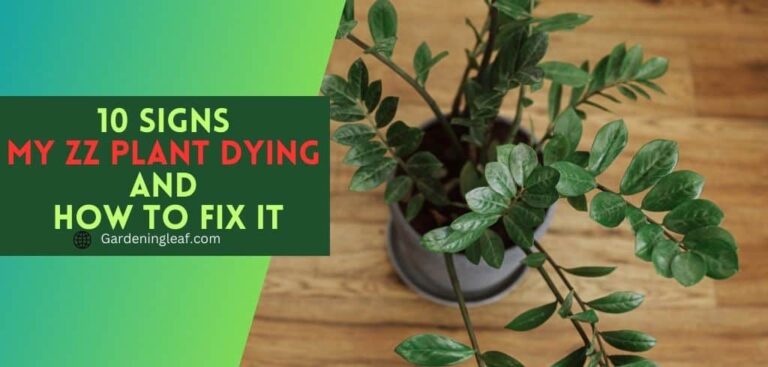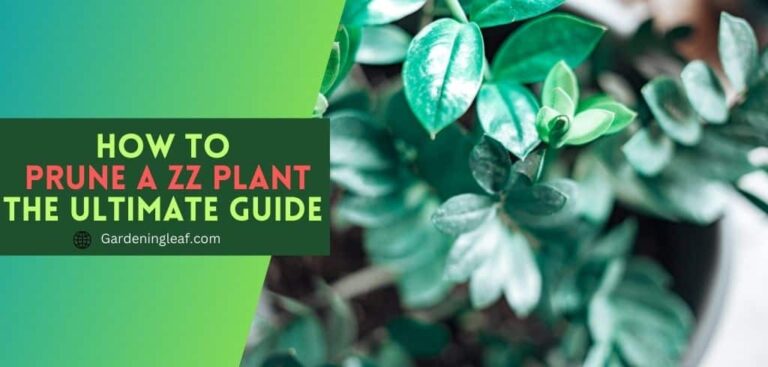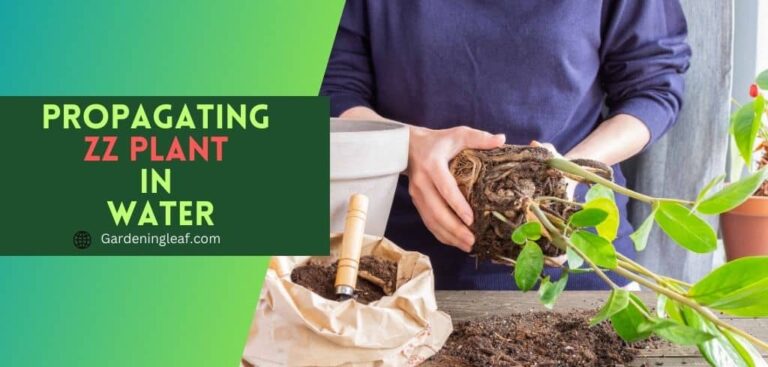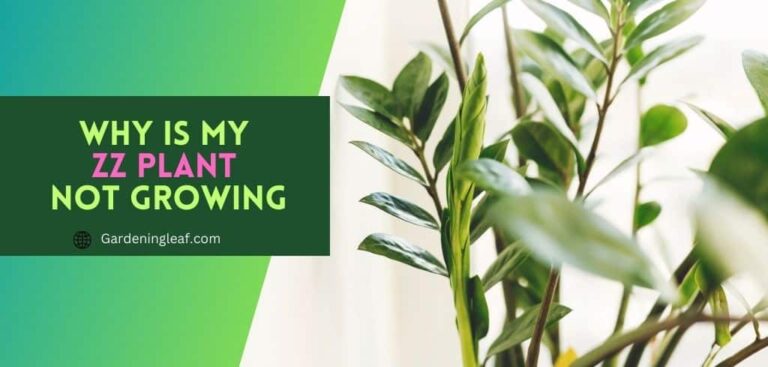How to Care for ZZ Plant Indoors: Effortless Care Guide
Today, indoor plants play an important role in enhancing the beauty of any home. If you are looking for an elegant and low-maintenance plant that can survive in low light. Then there is no alternative to Zamioculcas zamiifolia, a common name for ZZ plant.
This tropical perennial plant originates from eastern Africa. It’s popular among plant enthusiasts due to its ability to survive in poor lighting and neglect. We’ll discuss how to care for the ZZ plant indoors. Following that advice, you can keep your ZZ plant happy and healthy for years. With a little care, your plant will continue to thrive and bring a touch of nature to your indoor space.
Benefits of Growing ZZ Plants Indoors
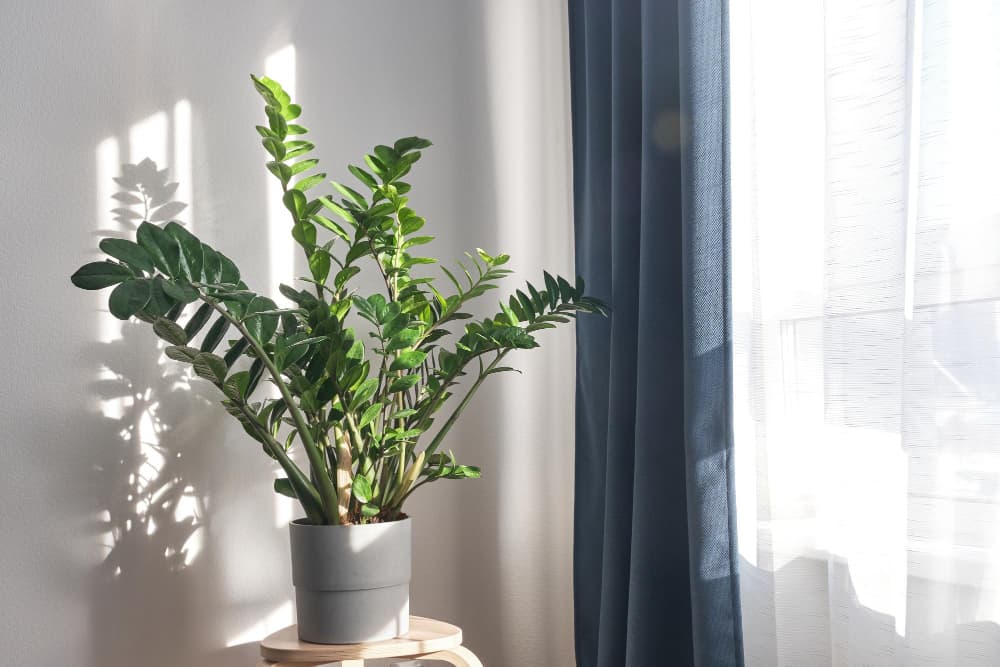
ZZ plants are visually appealing, incredibly low maintenance, and easy to grow, even in low-light conditions. But not all these plants offer a range of health benefits too! It helps to remove harmful toxins like benzene and formaldehyde. It also helps purify your home’s air. They can also help increase the humidity levels in your space, reducing dry skin, eyes, and throat. Adding to your indoor environment can enhance its aesthetic appeal and contribute to your well-being.
Types of ZZ Plants
| Common Name | Scientific Name | Description |
|---|---|---|
| Zanzibar Gem | Zamioculcas zamiifolia | Dark green, glossy leaves with a waxy texture |
| Black Raven | Zamioculcas zamiifolia ‘Raven’ | Dark purple-black leaves with a waxy texture |
| Zamicro | Zamioculcas zamiifolia ‘Zamicro’ | Compact variety with smaller leaves |
| Zamifolia Variegated | Zamioculcas zamiifolia ‘Variegata’ | Green leaves with white or yellow variegation |
Read More:- Why Is My ZZ Plant Not Growing: 8 Possible Reason
10 Tips for how to care for ZZ plant indoors
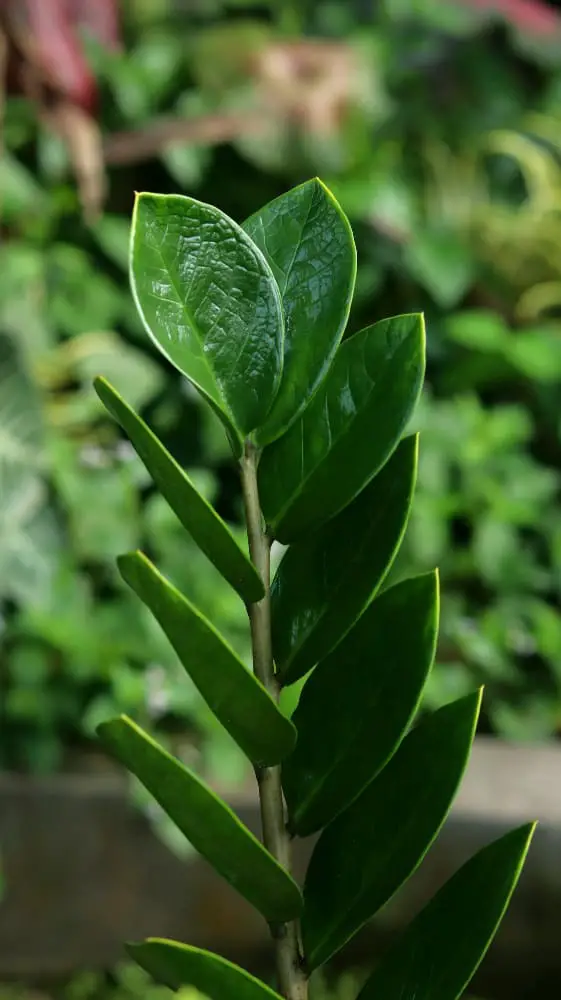
1: Choosing the Right Pot and Soil
For indoor ZZ plant care, selecting the proper pot and soil is key. ZZ plants thrive in well-draining soil that does not keep excess moisture. To avoid water collecting at the bottom of the pot, choose one with sufficient drainage holes.
Using a pot slightly larger than the current root ball will allow room for growth without causing excess moisture. When it comes to potting mix, a mix of potting soil, perlite, and sand might offer the ideal ratio of nutrients and good drainage.
It’s also important to refresh the soil every 2-3 years. Moreover, repot the plant into a bigger container to allow for growth. Proper pot and soil selection can ensure a healthy growth environment and prevent common issues like root rot.
2: Watering
Proper watering is important in keeping your ZZ plant happy and healthy indoors. Make Sure the soil will dry out before waiting. Throughout the growing season, watering just once a week is usually sufficient. But still, this may change based on the environment.
ZZ plant root rot is often caused by overwatering. Use well-drained soil to avoid this. If you see root rot symptoms like drooping leaves or mushy roots. Repot the plant in new soil after removing the diseased roots.
Consider using a pot with drainage holes and a saucer to prevent over-watering. This will avoid soggy soil by allowing excess water to drain from the plant.
Additionally, make sure the leaves don’t become wet, as this might cause decay or the growth of fungi. Following these watering tips helps ensure how to care for the ZZ plant indoors.
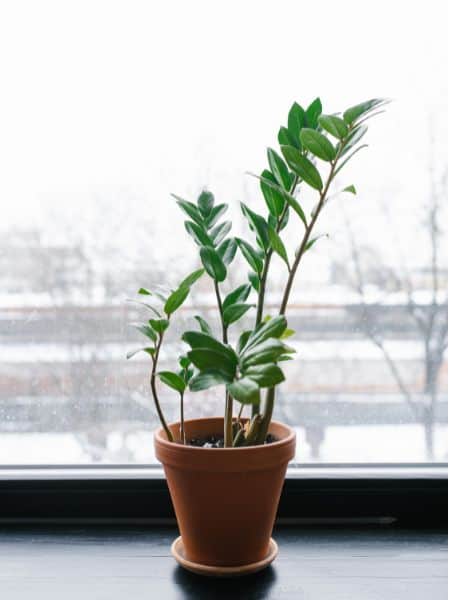
3: Providing Adequate Light
One of the most crucial care tips for indoor ZZ plants is providing enough light. Moderate to bright indirect light is ideal for these plants to thrive. Putting them in an area that receives sunlight from a window. In this way, you can offer adequate Light.
In case natural light is not available or insufficient. Artificial lighting might be a good substitute for providing your plant with the proper light.
But don’t place it in direct sunlight. It can damage their leaves. Additionally, rotating the plant can ensure even growth and exposure to light.
4: Controlling Humidity Levels
Another key factor in keeping your ZZ plant happy and healthy indoors is controlling humidity levels. These plants thrive in medium to high humidity levels. So you must ensure they are getting the moisture they need. The plant’s leaves may turn yellow and fall off with too low humidity.
You may do a few things to raise the humidity levels. Using a humidifier in the space housing your ZZ plant is one alternative. Another choice is to put a tray of water close to the plant.
Which will evaporate and release moisture into the atmosphere. Water misting the plant can also aid in raising humidity levels. Yet, it’s crucial to avoid overwatering to raise humidity levels.
Read More:- Propagating ZZ Plant in Water: Easy Tips
5: Fertilizing
Fertilizing your ZZ plants is essential to promote their growth and overall health. While these plants don’t require frequent fertilization, occasional feeding can work wonders.
Use a balanced fertilizer with the same nitrogen, phosphorus, and potassium amounts. Every two to three months is advised when fertilizing ZZ plants in the spring and summer. Yet, it’s important to avoid overfertilizing. This can result in a buildup of salt in the soil and harm the roots. For the greatest results, always adhere to the directions on the fertilizer box.
6: Managing Pests and Diseases
Taking care of your ZZ plant includes managing potential pests and diseases. Spider mites and mealybugs are common pests that can damage the plant.
So inspecting and isolating your ZZ plant if you spot any pests is important. If there is an infestation, insecticidal soap or neem oil treatment can help.
7: Pruning
One of the important tips for keeping your ZZ plant happy and healthy indoors is pruning. Pruning can help ZZ plants grow fuller and healthier. Use well-kept, sharp pruning scissors to avoid harming the plant during trimming. When they are growing, spring or summer is the best time to prune.
Removing yellow or brown leaves or stems is important when pruning since they signify damage or disease.
Trimming back long stems is another way to encourage new growth and prevent the plant from becoming too top-heavy.
Read More:- How to prune a ZZ Plant
8: Propagating
Propagation also helps ZZ plants to thrive indoors. It provides the opportunity to produce new plants from the original ones. This helps expand your collection and allows for the production of healthier and more vibrant plants.
Propagating prevents issues such as root rot and other overwatering diseases. You will be working with a fresh batch of soil and new roots.
By propagating, you can experiment with different potting techniques and fertilizers. Knowing what functions best for your particular plant is helpful.
9: Keeping Plants Clean
Although ZZ plants need little care, regular cleaning is necessary to maintain their well-being. The accumulation of dust and debris on a plant’s leaves can obstruct photosynthetic activity. Use a delicate, wet towel to carefully wipe each leaf of your ZZ plant to clean it. Avoid harsh cleaning products or chemicals, as they can damage the foliage.
Regular cleaning keeps your plant healthy and enhances its appearance. With its shiny, waxy leaves, a clean ZZ plant will look more vibrant and appealing in your indoor space.
10: Be Patient and Observant
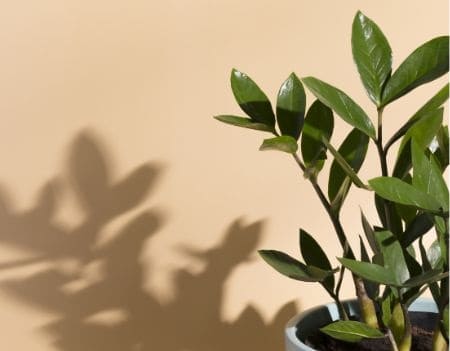
Being patient and observant are important qualities for caring. ZZ plants are slow growers and do not need regular watering or fertilization. Patience is important because it takes time to see growth and progress.
Observing the plant’s growth pattern, the color of leaves, and soil moisture level can help identify potential problems.
For example, yellowing leaves could be a sign of too much water. At the same time, brown or black spots on the leaves could indicate a pest or fungal infestation.
Observation can also help to identify when the plant needs repotting or pruning.
ZZ plants can become root-bound over time, which means their roots outgrow their container. This can lead to stunted growth or waterlogged soil. Repotting the plant into a larger container can give it more room to grow and thrive.
Following the above tips will help how to care for ZZ plants indoors without any mistakes.
Read More:- How to Care for ZZ Plant Indoors: Effortless Care Guide
How Often Should I Water My ZZ Plant?
To keep your ZZ plant happy and healthy inside, knowing how frequently to water it is crucial. ZZ plants are well renowned for their drought resistance and infrequent watering needs. It normally suffices to water the plant once every two to three weeks.
When watering your ZZ plant, checking the soil moisture level before adding more water is important. Also, it’s important to consider humidity levels for proper watering practices. ZZ plants prefer moderate humidity. So adding a humidifier or misting the leaves can help keep them happy and healthy.
Can I Propagate ZZ Plants Indoors?
ZZ plants can be propagated indoors through stem cuttings or by dividing the rhizomes. When propagating with stem cuttings. Select healthy, mature plants and allow the cuttings to dry before planting them in well-draining soil.
Is My ZZ Plant Getting Enough Light?
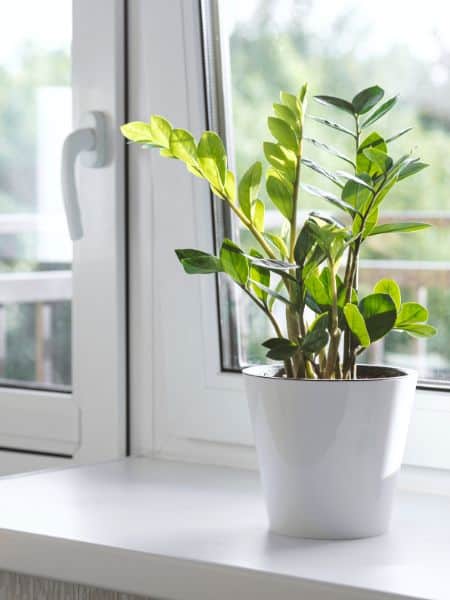
One common concern is whether the plant is getting enough light. ZZ Plants are known for growing in low-light conditions. They are light-responsive and can adjust to different environments.
But, if your ZZ Plant isn’t receiving enough light, you may notice that its leaves begin to turn yellow or brown.
To ensure your ZZ Plant gets the proper amount of light, placing it near a window that receives bright but indirect sunlight is best.
Investing in artificial grow lights can be a great option if this isn’t possible. It’s important to note that placing in a direct light can damage the leaves.
So it’s best to avoid doing so. Providing the right light can help ensure its health and happiness indoors.
Are ZZ plants safe for pets?
Yes, ZZ Plants are safe for pets. The plant’s leaves won’t make pets ill so pet owners may relax. But, ensure the pet doesn’t ingest any part of the plant. It can cause an upset stomach or other digestive issues.
Read More: How to keep dogs out of potted plants | 6 Easy Tips
Conclusion
ZZ Plants are one of the easiest houseplants to care for and can bring a touch of greenery to any indoor space. It is important to understand its growing conditions, watering, fertilization, and grooming needs. With proper care, ZZ Plants can thrive indoors and provide many benefits. Such as raising the air quality, lowering our overall stress levels, and boosting our well-being.
I hope you will get all the information you need to understand how to care for Zz plant indoors and take the necessary steps to promote healthy growth.
Source:- https://www.gardenista.com/posts/everything-you-need-to-know-about-zz-plants-zamioculcas-zamiifolia/

